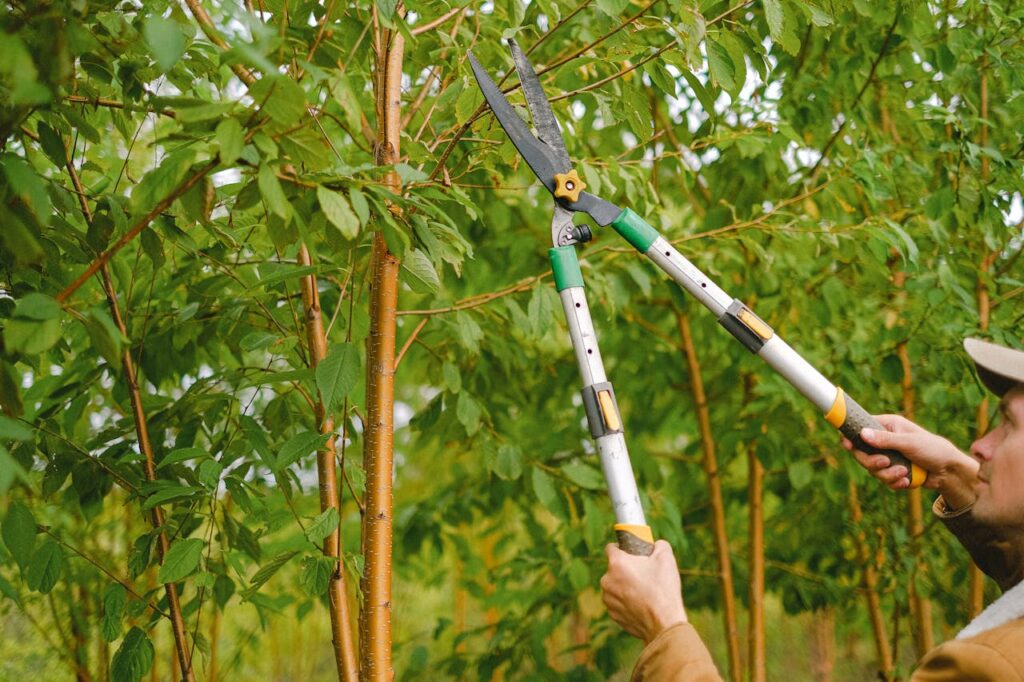Tree Cabling Services in Arlington: Trees are more than just a backdrop for your landscape. They are living entities that require careful attention to maintain their health and stability. As trees age or face environmental stresses, they can develop structural weaknesses that can make them vulnerable to damage or failure.
Tree cabling and bracing can stabilize, support, and strengthen trees compromised by weak branches, poor growth patterns, or storm damage. To get the best results, you should hire trusted tree cabling services in Arlington with expertise in enhancing the structural stability of different types of trees.
What is Cabling and Bracing?
Tree Cabling involves installing strong cables or rods to support weak or vulnerable branches and trunks. The process begins with an evaluation by a certified arborist, who determines the best approach for the tree’s specific needs. Once the assessment is done, cables are installed to redistribute weight and reduce strain on critical parts of the tree. This support helps prevent splitting or limb failure and can extend the tree’s lifespan.
Tree Bracing complements cabling by providing additional support to trees with structural issues such as cracks or splits. Bracing typically involves installing rods or braces to stabilize weak or splitting trunks and branches. These supports are anchored into the tree to hold it in place and prevent further damage. Professional tree cabling services in Arlington can carefully assess the condition of your trees and determine what kind of cabling and bracing is required to provide the necessary support.
Signs That a Tree Might Require Cabling and Bracing
Cracks or Splits: Visible cracks or splits in the trunk or major branches can signal structural weaknesses that might require bracing to prevent further damage.
Lean or Tilt: If a tree is leaning significantly to one side, it could indicate instability. While some leaning is natural, excessive tilting may necessitate cabling to provide support and correct the tree’s posture.
Weak or Damaged Branches: Large branches that appear weak or damaged and branches that are splitting can benefit from cabling and bracing, reducing the risk of breakage.
Multiple Leaders: Trees with multiple main trunks (leaders) that are growing close together might be prone to splitting. Cabling can help hold these leaders together and prevent structural failure.
Why Professional Expertise is Needed for Cabling and Bracing
Professional expertise is essential for cabling and bracing due to the complexities and risks involved in these procedures. These include:
• Improper installation of cables or braces can lead to further damage rather than solving the problem. Overtightening cables, for instance, can constrict the tree’s growth and harm the trunk or branches. Conversely, insufficient tension might not provide adequate support, leaving the tree vulnerable to environmental stresses.
• Professional expertise is needed to assess a tree’s condition and determine the correct type and placement of supports. Mistakes in this evaluation can result in ineffective support or even exacerbate existing issues. Professional arborists have the training and experience to evaluate the tree’s health, structure, and growth patterns, ensuring that the cabling and bracing are tailored to the tree’s specific needs.
• Installing cabling and bracing often involves working at heights and using specialized equipment. This can be dangerous and increase the risk of accidents without proper training. Hiring a certified arborist ensures that the process is carried out safely, effectively, and with minimal risk to both the tree and the individuals performing the work.
Secure Your Trees with Expert Cabling and Bracing from Chippers Tree Service
At Chippers Tree Service, we offer professional cabling and bracing solutions to maintain the health and stability of your trees. Every cabling and bracing application is accurate and cautious since we follow ANSI A300 guidelines. Our team uses Extra-High-Strength (EHS) wiring, which supports 3.5 times more than standard cabling. This advanced hardware ensures maximum strength and durability, giving your tree the robust support it needs to thrive.
For bracing applications, we use machine-threaded rods combined with heavy-duty washers and nuts to fasten each end of the rod securely. This method is especially effective for stabilizing trees with open crotches or structural weaknesses, offering reliable reinforcement to prevent further damage.
Don’t risk your trees’ health and safety with subpar solutions. Call Chippers Tree Service today at 972-743-9959 or contact us online for a comprehensive assessment of your trees’ health and stability.


